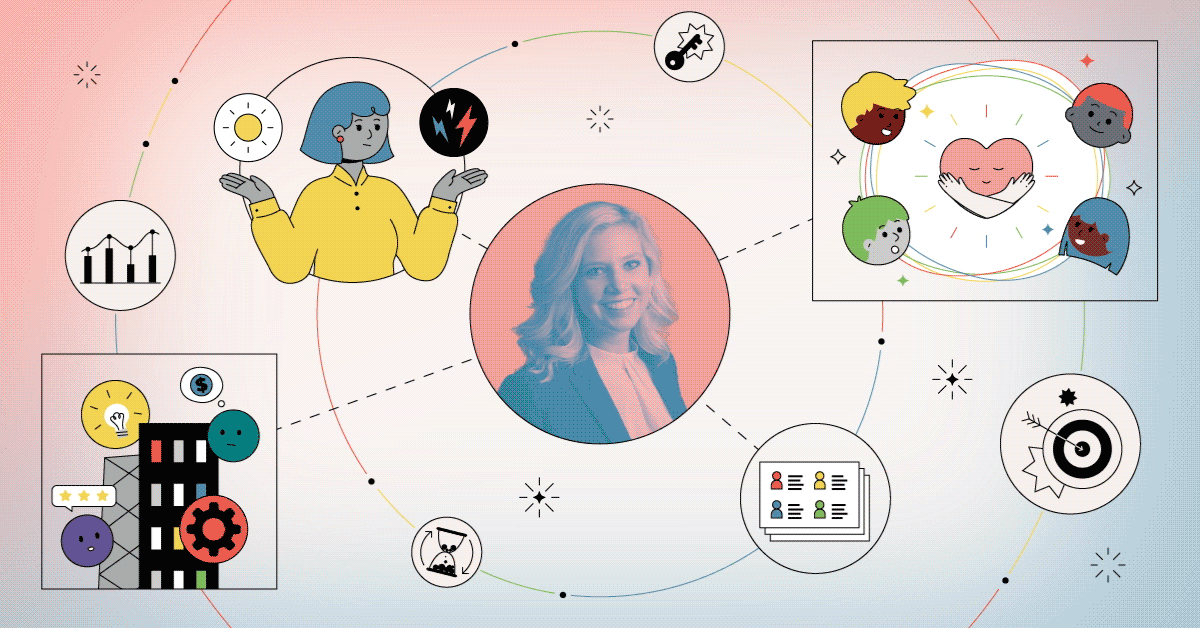
I remember entering the ‘real world’ after graduating college blurry-eyed and optimistic. My timing wasn’t great, as the US economy was crashing. The housing market was making a historic nosedive and the job market was scary, to put it nicely.
This was not ideal. I had just spent four (and a half) years preparing to make a difference in the world and all I could do was serve at a local restaurant while submitting resume after resume.
Nearly 8 months after I received my college degree, I found myself sitting at a coffee shop across the table from a woman who would change my life. This didn’t feel like an interview— it felt like a conversation with an older, wiser friend. That conversation turned into eight years of employment where I was treated as a peer. I was asked for my opinion, even though I didn’t have any experience. I was given opportunities I probably wasn’t ready for. I was trusted. I was valued. I was respected.
I didn’t realize it then, but I was getting a master class in how to be a successful, fearless leader. To be fair, it wasn’t always rainbows and butterflies. But I was given the space to learn, to fail, to overcome obstacles, to experiment, and to grow.
Fast-forward to today: in the current world of social media, television, and streaming, you don’t have to look hard to see signs of poor or ineffective management all around. Why is this so prevalent? Maybe because we’re creatures of habit and we have a deep history to reference.
The Traditional Approach to Leadership
I grew up in a farming community in the rural Midwest. There were basically 3 professions: farmer, factory employee, or educator. As you might imagine, there are some fairly distinct expectations and historical precedents when it came to managing or leading in any of those roles. The right leadership approach in one role might not work in others.
Stephen R. Covey discusses the five different working models our society has seen throughout history within the first 15 pages of his book, The 8th Habit, From Effectiveness to Greatness.:
- Hunter/GathererDay in and day out, you’re doing what you know works to provide for your family. Suddenly someone comes along and tried to persuade you to do something different, to become a farmer…
- Agricultural
Eventually, you realize that the farmer is getting a much better yield for playing in dirt than you are using your rocks and arrows each day. This works for a long time until a new idea comes along…
- Industrial
This is where people become necessary but replaceable and productivity increases 50 times that of the family farm. But technology and information depend on…
- Information/Knowledge Worker
They are the link to all the organization’s investments. And will be dependent on…
- Wisdom
As the world transitioned from stage to stage, there was disruption, fear, and experimentation. The world is still evolving at an incredible pace and even though you found success in the past, it may not be effective today and likely will not be effective tomorrow.
So How Can You Find Your Management Style?
As I’ve grown and tried on different managerial hats, I’ve realized that sometimes you have to try different approaches. There are times when I wish the industrial leadership style worked since it would take a lot less effort. But that’s not reality. I’m dealing with people. There are emotions, talent, skills, experience, history, and so much more depth at every level. Looking at a team member as an object or asset, which has been done in the past, won’t be very effective.
Somewhere in my journey, I thought maybe I should try managing others the way I’d like to be managed: by being bold, direct, and transparent. Don’t sugar-coat things. Just land the plane. I thought it would work. I was naive and I was wrong.
I also thought that emulating what I’ve seen and how I’ve been managed and led might work, and just like the other experiences, I learned quickly that it’s not an effective tactic when working with a diverse group of people who make up a team. When looking at multiple teams, it gets even more complex, and, let's be real; trying to be someone else feels wrong and the entire team can see right through it.
What does work is this: meeting each person where they are. I’m fortunate to have the TTI Success Insights tools at my fingertips which allow me to create a safe environment to have conversations about communication and motivation. It may sound a little cheesy, but it works.
There’s a comparison report run between myself and each of my team members. This allows us to sit down and go through each section, together, to see where things are going to be easy and where it might take us a bit of work to find a solution that is successful for both of us. We then take that to the team level and look at how our entire team plays out.
We try to be realistic; even if we know this information, we’re not going to be perfect. It takes effort! Just like any good team, all the players have to put in the practice and the work, and the bigger the team, the more work it takes because the relationships are more complex.
By making understanding a priority as something we talk about through the assessments, we can take some of the emotion out of the process of working together. We can use the tool as a talking point and help create a safe place to share our differences, let others know when something doesn’t work, and celebrate successes when they do.
In addition to using our assessments, creating and sharing clear guidelines and accountabilities can go a long way. We recently did an exercise where each group of people in a role outlined the details that were important to their success; relationships, activities, characteristics, skills, and goals. We then openly discussed what that looked like for the different roles on each of our teams.
As each person begins to understand the role, responsibilities, and concerns of their colleagues, the team not only becomes more effective due to a more complete understanding of the operations, but the team begins to develop empathy and perspective. Each team member, myself included, can better adapt the way we approach one another.
One Size Doesn’t Fit All!
There’s no fairy dust or magic wand that allows you to manage everyone the same all the time. I’ve learned that I must take into consideration who I’m speaking with and what they need in that moment. I’ve also learned that it’s okay to explain that sometimes decisions must be made based on the needs of the organization (going back to that last exercise). It doesn’t mean you’re brushing off responsibility; it means you’re helping your team see that you’re juggling several different stakeholders and possibilities. Whenever possible, have a discussion, because the needs of the organization or the team may be different and the outcome may not be the same as it was the last time.
It’s not always easy, but understanding the varying needs inside the team for each individual helps create perspective and build trust. When someone who might not operate the same way I do comes to me in the way I prefer (direct, to the point, shows me how we move forward quickly, and asks for exactly what they need), it shows me they know and care about me.
Emulating this for others is one of the most significant ways I can show them respect. Slowing down and letting one team member process is very likely the way the person, team, and organization are going to get the best results. However, that may completely disengage another person who wants to see the results and ROI at the moment. It really does come down to knowing yourself and the individual you’re connecting with at that moment.
Make Your Own Management Style Work
There’s not one right or wrong way to lead. In fact, it’s likely you’ll need to show up differently for different team members, teams, and groups.
For me, I’ve found that as long as I’m leading with integrity, good intent, being respectful, and taking the people I’m working with into consideration for who they are and the unique talent and experience they bring, the team takes care of each other and can be successful.
The key to being a great leader? Know yourself, be flexible, be authentic, and take a genuine interest in your people.




